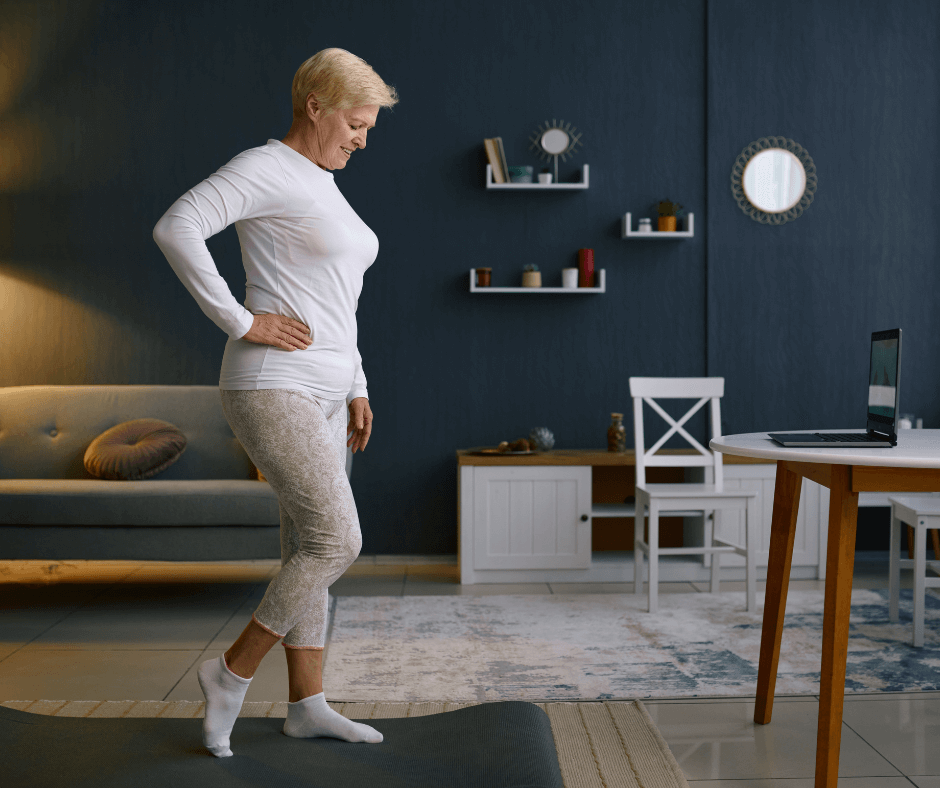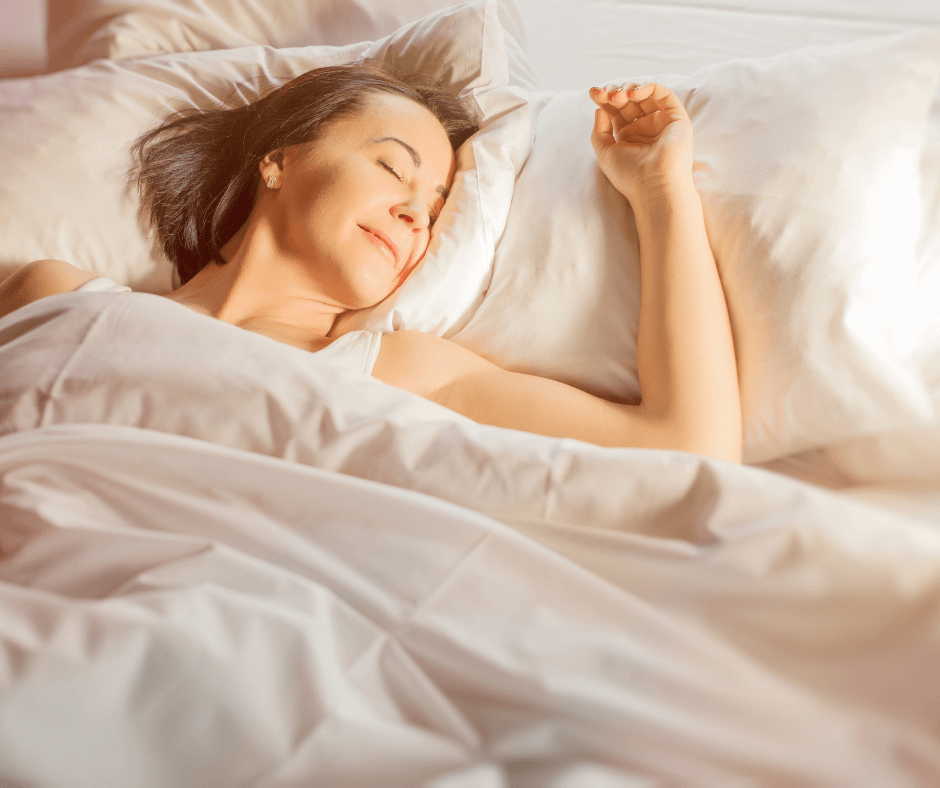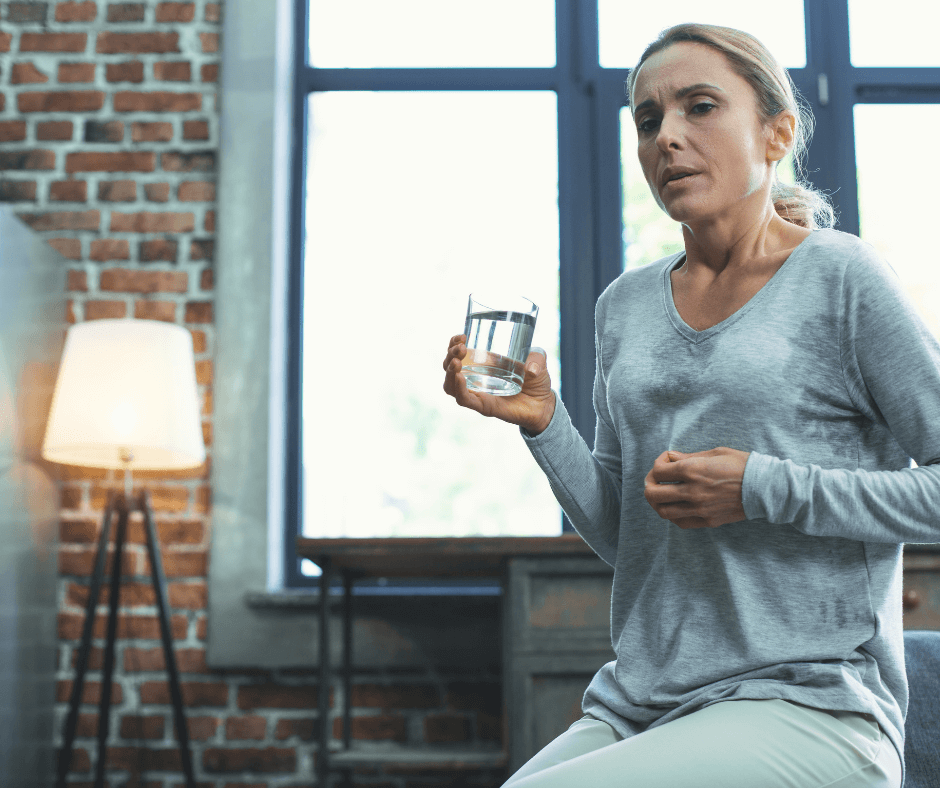The benefits of being active.
Why staying active is so beneficial for us at this stage of life:
To find the immediate health benefits of being active, click here.
As women enter their 50s and beyond, staying active becomes more important than ever.
Regular exercise is not just about maintaining physical appearance; it plays a vital role in enhancing overall health and well-being.
From alleviating symptoms of chronic conditions to improving mental health and promoting strong bones, the benefits of being active are profound. In this blog, we’ll look at how exercise can equip women over 50 to lead fulfilling lives, combat health challenges, and embrace the joy of movement.
Chronic conditions
Exercise can specifically benefit individuals with various chronic conditions:
Arthritis: Eases pain, strengthens muscles around joints, and improves movement.
Asthma: Helps control asthma attacks and severity.
Back pain: Low-impact aerobic exercise and core-strengthening exercises can alleviate symptoms and improve back strength.
Cancer: Enhances quality of life, fitness, and reduces the risk of certain cancers.
Dementia: Improves cognitive function and reduces the risk of cognitive decline.
Depression and anxiety: Helps alleviate symptoms of both conditions.
Diabetes: Lowers blood sugar levels, controls weight, and boosts energy.
Heart disease: Reduces the risk of heart-related complications and mortality.
Osteoporosis: Builds strong bones and slows bone loss through weight-bearing exercises.
By incorporating regular exercise into their routine, individuals with chronic conditions can experience significant improvements in their health and overall wellbeing.
2. Overall health
At this stage of our life, we start to feel more niggles when we wake up in the morning.
But what we don’t ‘feel’ are the serious health issues like cardiovascular disease, stroke, diabetes, and some types of cancer disease, diabetes, certain cancers for example:
‘Bladder
Breast
Colon (proximal and distal)
Endometrium
Esophagus (adenocarcinoma)
Kidney
Lung
Stomach (cardia and non-cardia adenocarcinoma)
Being active reduces the serious outcomes from infectious diseases, including COVID-19, the flu, and pneumonia. - Centers for Disease Control and Prevention
For example:
People who do little or no physical activity are more likely to become very sick from COVID-19 than those who are physically active. A CDC systematic review [PDF-931KB] found that physical activity is associated with a decrease in COVID-19 hospitalisations and deaths, while inactivity increases that risk.
People who are more active may be less likely to die from flu or pneumonia. A CDC study found that adults who meet the aerobic and muscle-strengthening physical activity guidelines are about half as likely to die from flu and pneumonia as adults who meet neither guideline. - Centers for Disease Control and Prevention.
Being active also helps maintain a healthy weight and manage pesky conditions like arthritis and osteoporosis.
3. Independence and fall prevention
3. Independence and fall prevention
‘Functional independence is directly dependent on physical fitness," a February 2015 study in Rejuvenation Research notes.
The study points out direct relationships between physical fitness levels in older adults and their risks for heart disease, cognitive decline, muscle loss and disability — all of which influence one's independence and longevity.” - Dr Scott Kaiser. a family medicine physician and geriatrician at Providence Saint John's Health Center in Santa Monica, California.
Inactivity and ageing increase the risk of chronic diseases and falls [6].
Being able to carry out everyday tasks like climbing stairs or shopping independently is essential for maintaining our independence. This ability, known as functional capacity, can be preserved through regular physical activity, particularly for older adults.
Engaging in a variety of exercises, including aerobics, muscle strengthening, and balance training, can improve physical function and reduce the risk of falls and fall-related injuries. These activities can be done at home or as part of a structured community program.
Physical activity can maintain quality of life, health, and physical function, and reduce falls [19,20].
‘Weight-bearing exercises, which force your body to work against gravity, have been shown to be the best type for reducing your risk of bone fractures in old age, according to the National Institute of Arthritis and Musculoskeletal and Skin Diseases.’ - Livestrong
Falls, especially hip fractures, can have severe consequences for older adults.
4. Strong bones
4. Strong bones
By doing strength training or ‘weight-bearing exercises help in maintaining bone density, reducing the risk of osteoporosis.’ - Orthopedic & Sport Medicine Institute
‘Osteoporosis, a degenerative skeletal disease that causes your bones to become weak and fragile, increases your risk for fractures, says Laureen McVicker, lead physical therapist at Fusion Wellness & Physical Therapy.
is especially true after menopause, when bone density can decrease more rapidly, McVicker says.
By keeping our bones strong, we can counteract muscle loss and improve physical performance [7].
It increases the bone mass. Strength training and impact activities (like walking or running) can help to offset the decline of bone mineral density and prevent osteoporosis. - Pubmed
5. Muscle power and flexibility
5. Muscle power and flexibility
Regular exercise keeps our muscles strong and flexible, which is crucial for staying mobile, balanced, grip strength, living independently, and being less prone to falls.
6. Heart health
6. Heart health
‘The Canadian Journal of Cardiology shows that exercise is most
important for older adults, and it's never too late to start.
.
"Exercise lowers your blood pressure [and] strengthens your muscles, including the heart, and keeps your weight under control," Anthony Hilliard, MD, chief of cardiology for Loma Linda University Health.
Exercise is associated with decreased cardiovascular mortality and improves heart function [10], by lowering blood pressure, improving cholesterol levels, and keeping our blood flowing smoothly.
Exercise increases the cardiorespiratory function. If done regularly, it reduces the metabolic risks associated with declining estrogen. It increases HDL, reduces LDL, triglycerides and fibrinogen. There is an additional benefit of a reduced risk of high blood pressure, heart attacks, and strokes. - Exercise beyond menopause - National Library of Medicine
7. Mental boost and brain health
7. Mental boost and brain health
Physical activity boosts brain health.
Exercise can help you manage stress by boosting your mood and improving your overall well-being. Whether it's a brisk walk or a yoga session, any form of physical activity can relieve stress, even if you're not very fit.
Here's how exercise helps with stress:
It releases feel-good chemicals called endorphins, making you feel happier.
Exercise mimics the body's response to stress, helping it cope better.
Moving your body helps you forget about daily worries and focus on the present moment.
Regular exercise boosts self-confidence, improves mood, and reduces feelings of anxiety and depression.
It also enhances brain health, reducing the risk of cognitive decline and improving cognitive function.t ‘can also reduce your risk of cognitive decline, including dementia.
One study found that cognitive decline is almost twice as common among adults who are inactive compared to those who are active.; - Centers for Disease Control and Prevention.
‘Physical activity improves mental health, delays dementia onset, and enhances overall well-being [3]
Being active not only lifts our spirits and reduces stress but also has immediate and long-term benefits for brain health.
Some benefits, such as reduced feelings of state anxiety and improvements in cognitive function, ('relating to the mental process involved in knowing, learning, and understanding things', - Collins Dictionary, attention, memory, crystallised intelligence,* processing speed.) occur right after a session of moderate-to-vigorous physical activity (acute effect).
(*Crystallised intelligence involves the retrieval and use of information acquired over time and differs from fluid intelligence, which relates to the ability to process new information.)
Additionally, with regular physical activity (habitual effect), improvements are seen in long-term anxiety and various aspects of cognitive function, including executive function (such as planning, organising, initiating tasks, and controlling emotions).
8. Social connection
8. Social connection
Whether it's joining a fitness class or going for walks with friends, staying active gives us opportunities to socialise and feel connected, which is so important for our wellbeing.
9. Longevity
9. Longevity
Studies show that staying active can help us live longer and enjoy a better quality of life as we age.
“Taking more steps a day also helps lower the risk of premature death from all causes. For adults younger than 60, the risk of premature death leveled off at about 8,000 to 10,000 steps per day. For adults 60 and older, the risk of premature death leveled off at about 6,000 to 8,000 steps per day.”
10. Improved sleep quality
10. Improved sleep quality
Based on available studies, “We have solid evidence that exercise does, in fact, help you fall asleep more quickly and improves sleep quality,” says Charlene Gamaldo, M.D. , medical director of Johns Hopkins Center for Sleep at Howard County General Hospital.
11. Reduced menopausal symptoms
Women with high or moderate physical activity levels have milder menopausal symptoms than inactive women.
Increasing physical activity during leisure time can also lessen the severity of menopausal symptoms.
Current results indicate that lack of physical activity worsens menopausal symptoms.
It may help to reduce hot flashes, thereby minimizing the “Domino effect.” - National Library of Medicine
12. Increased energy
12. Increased energy
Regular physical ac
tivity can improve your muscle strength and boost your endurance.
Exercise sends oxygen and nutrients to your tissues and helps your cardiovascular system work more efficiently. And when your heart and lung health improve, you have more energy to tackle daily chores. - Mayo Clinic
Keep moving, trying new activities, and enjoying the many benefits of staying active.
13. Lower back pain relief.
In summary, following a comprehensive exercise program offers menopausal women a pathway to maintain a fulfilling and healthy lifestyle without relying on hormone treatments.
By prioritising physical activity, women can not only combat the challenges of osteoporosis but also improve their overall mental wellbeing. As they improve muscle mass, strength, balance, and coordination, they are also taking proactive steps to manage weight and reduce the risks of stress, anxiety, and depression.
While the impact of exercise on hot flashes remains uncertain, the numerous benefits it provides make it an essential component of healthy ageing.
Menopausal women have the power to reclaim their vitality and enjoy a higher quality of life through consistent exercise.
Source:
World Health Organization. PA for health. More active people for a healthier world: draft global action plan on PA 2018- 2030. Vaccine. 2018 doi: 10.1016/j.vaccine.2018.04.022.
6. Camboim F. E. F., Nóbrega M. O., Davim R. M. B., et al. et alenefits of PA in the third age for the quality of life. J Nurs Recife. 2017;11(6):2415–22. [Google Scholar]
19. Gillespie L. D., Robertson M. C., Gillespie W. J., et al. Interventions for preventing falls in older people living in the community. Cochrane Database of Systematic Reviews. 2012;(9) doi: 10.1002/14651858.CD007146.pub3. [PMC free article] [PubMed] [CrossRef] [Google Scholar]
20. El-Khoury F., Cassou B., Charles M.-A., Dargent-Molina P. The effect of fall prevention exercise programmes on fall induced injuries in community dwelling older adults: Systematic review and meta-analysis of randomised controlled trials. BMJ. 2013;347 doi: 10.1136/bmj.f6234.f6234 [PMC free article] [PubMed] [CrossRef] [Google Scholar]
https://www.livestrong.com/article/13729514-exercise-benefits-over-50/
https://www.ncbi.nlm.nih.gov/pmc/articles/PMC6722698/
8. Brown D. W., Brown D. R., Heath G. W., et al. Associations between Physical Activity Dose and Health-Related Quality of Life. Medicine & Science in Sports & Exercise. 2004;36(5):890–896. [PubMed] [Google Scholar]
https://www.osmifw.com/sports-medicine/bone-density-and-weight-bearing-exercise/
7. Musich S., Wang S. S., Hawkins K., Greame C. The Frequency and Health Benefits of Physical Activity for Older Adults. Population Health Management. 2017;20(3):199–207. doi: 10.1089/pop.2016.0071. [PMC free article] [PubMed] [CrossRef] [Google Scholar]
10. Dumith S. C., Hallal P. C., Reis R. S., Kohl H. W. Worldwide prevalence of physical inactivity and its association with human development index in 76 countries. Preventive Medicine. 2011;53(1-2):24–28. doi: 10.1016/j.ypmed.2011.02.017. [PubMed] [CrossRef] [Google Scholar]
https://www.cdc.gov/nccdphp/dnpao/features/physical-activity-brain-health/index.html
3. Schuch F. B., Vancampfort D., Richards J., Rosenbaum S., Ward P. B., Stubbs B. Exercise as a treatment for depression: A meta-analysis adjusting for publication bias. Journal of Psychiatric Research. 2016;77:42–51. doi: 10.1016/j.jpsychires.2016.02.023. [PubMed] [CrossRef] [Google Scholar]
https://www.ncbi.nlm.nih.gov/pmc/articles/PMC6722698/
4. Livingston G., Sommerlad A., Orgeta V., et al. Dementia prevention, intervention, and care. The Lancet. 2017;390(10113):2673–2734. doi: 10.1016/S0140-6736(17)31363-6.
https://www.cdc.gov/physicalactivity/basics/pa-health/index.htm#brain-health
https://www.health.gov.au/topics/physical-activity-and-exercise/physical-activity-and-exercise-guidelines-for-all-australians/for-adults-18-to-64-years
https://www.cdc.gov/physicalactivity/basics/pa-health/index.htm#brain-health
https://health.gov/sites/default/files/2019-09/Physical_Activity_Guidelines_2nd_edition.pdf#page=39
https://www.mayoclinic.org/healthy-lifestyle/fitness/in-depth/exercise/art-20048389#:~:text=Exercise%20boosts%20energy&text=Regular%20physical%20activity%20can%20improve,energy%20to%20tackle%20daily%20chores.
https://www.ncbi.nlm.nih.gov/pmc/articles/PMC6304477/














